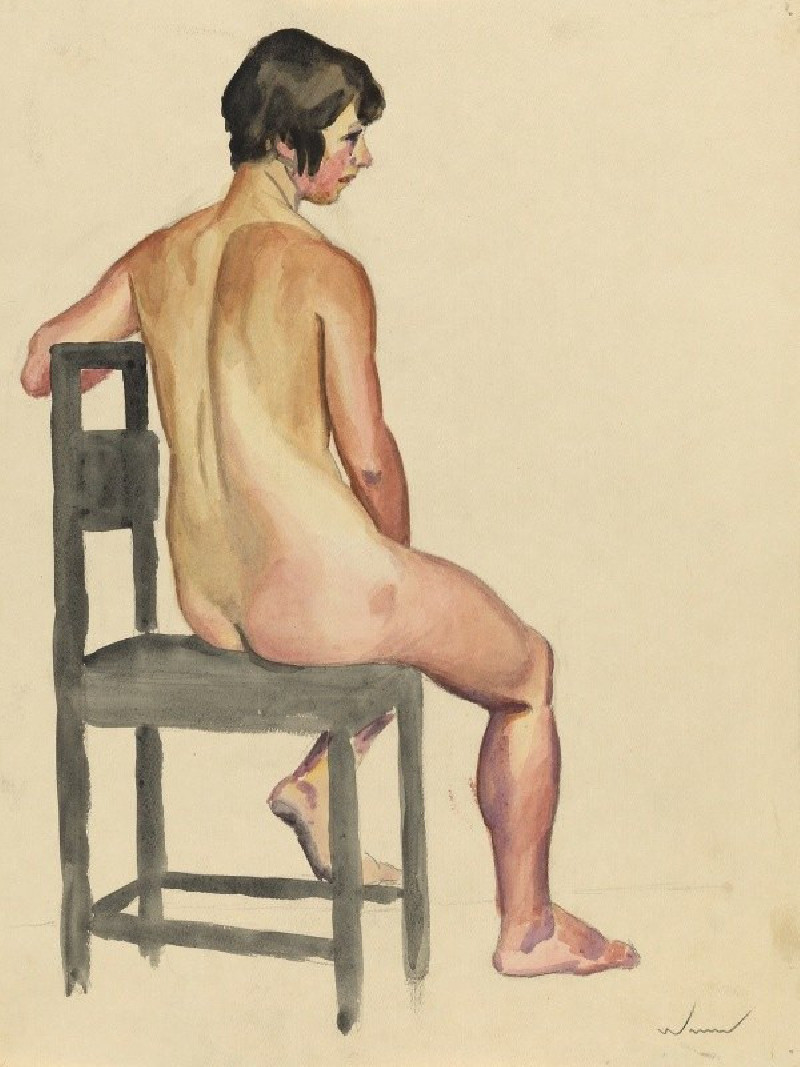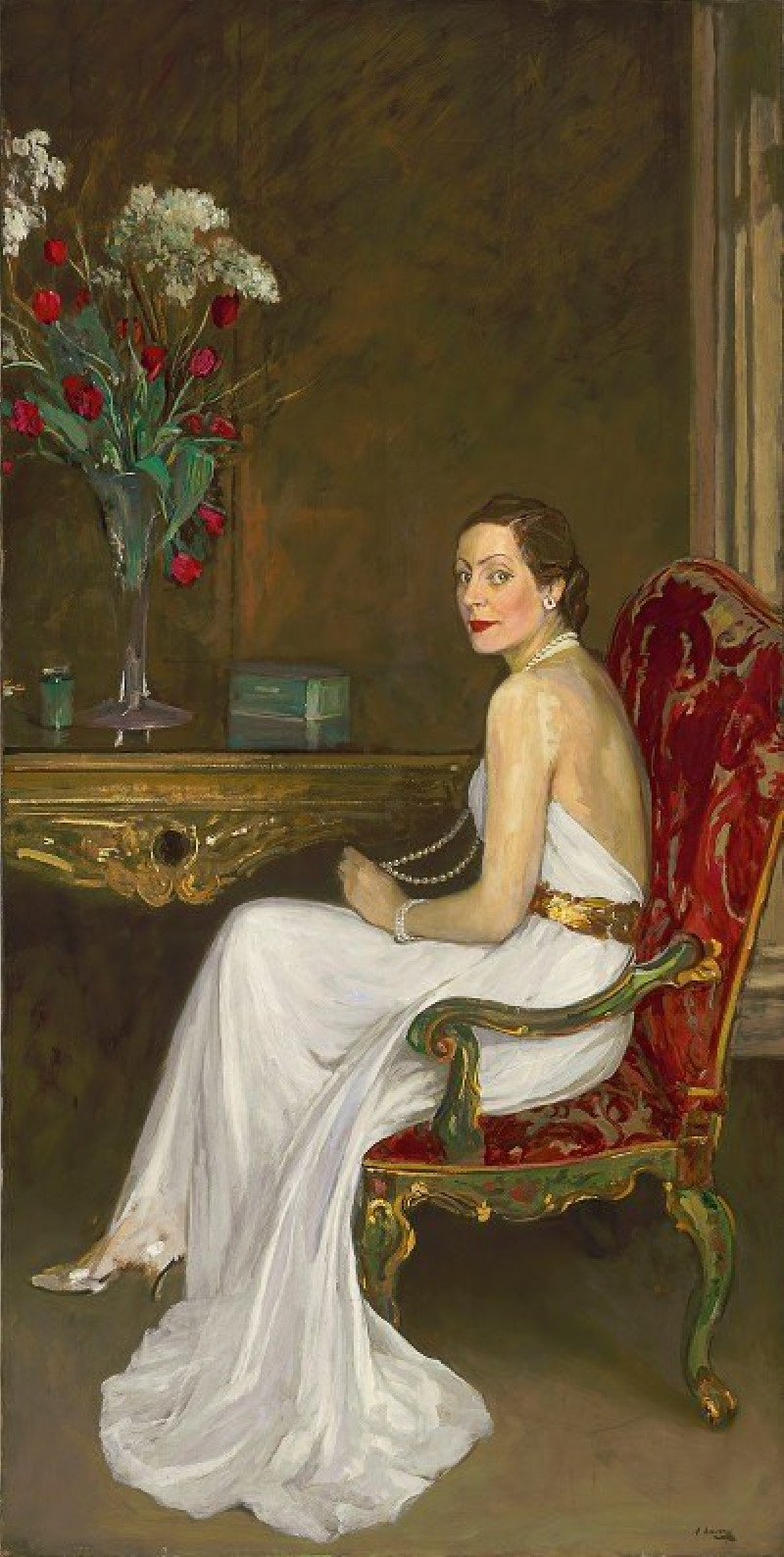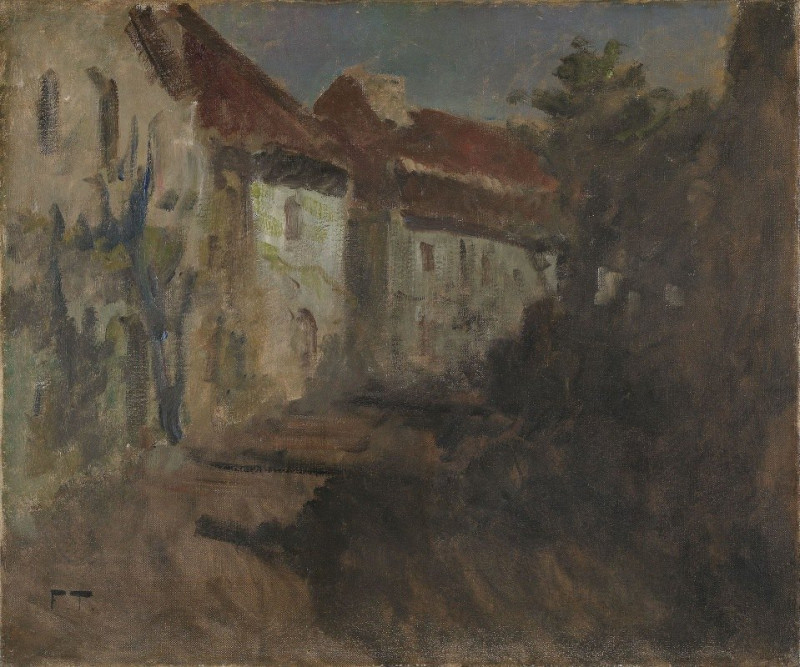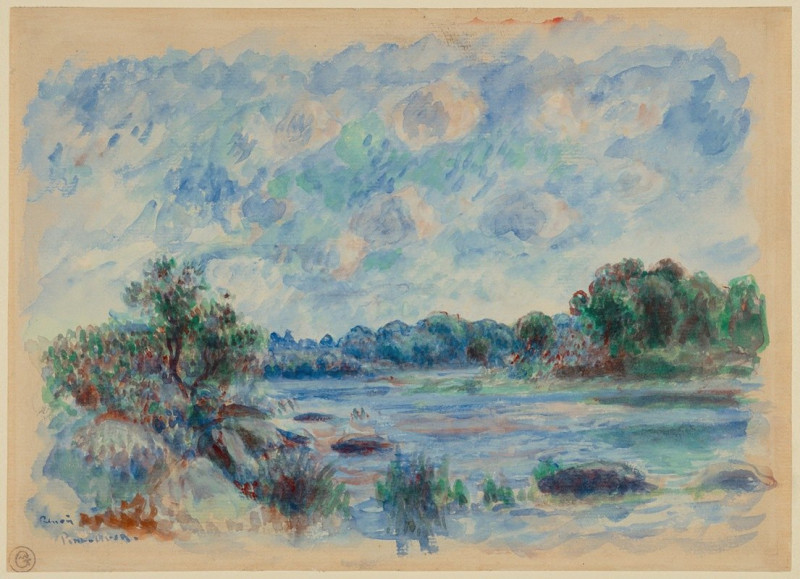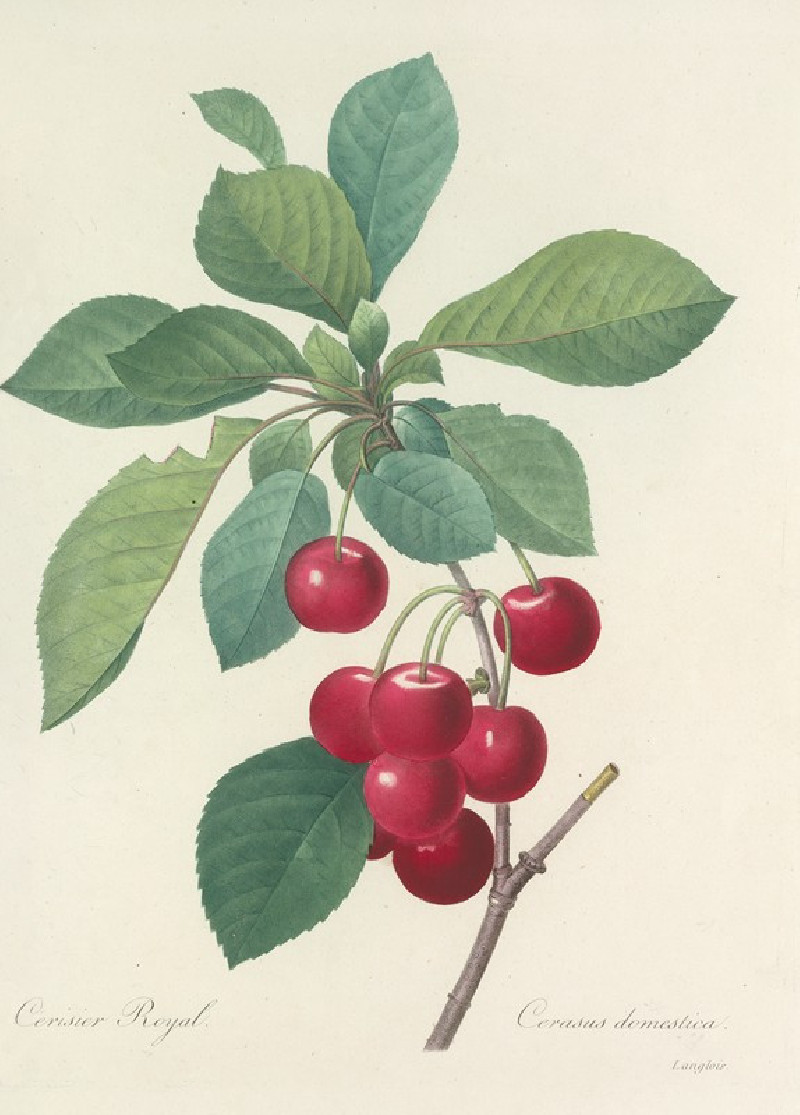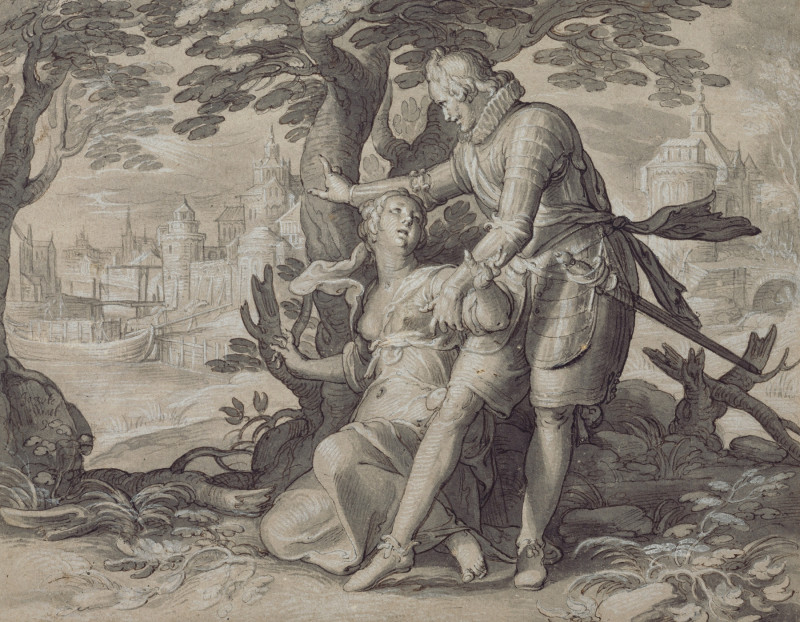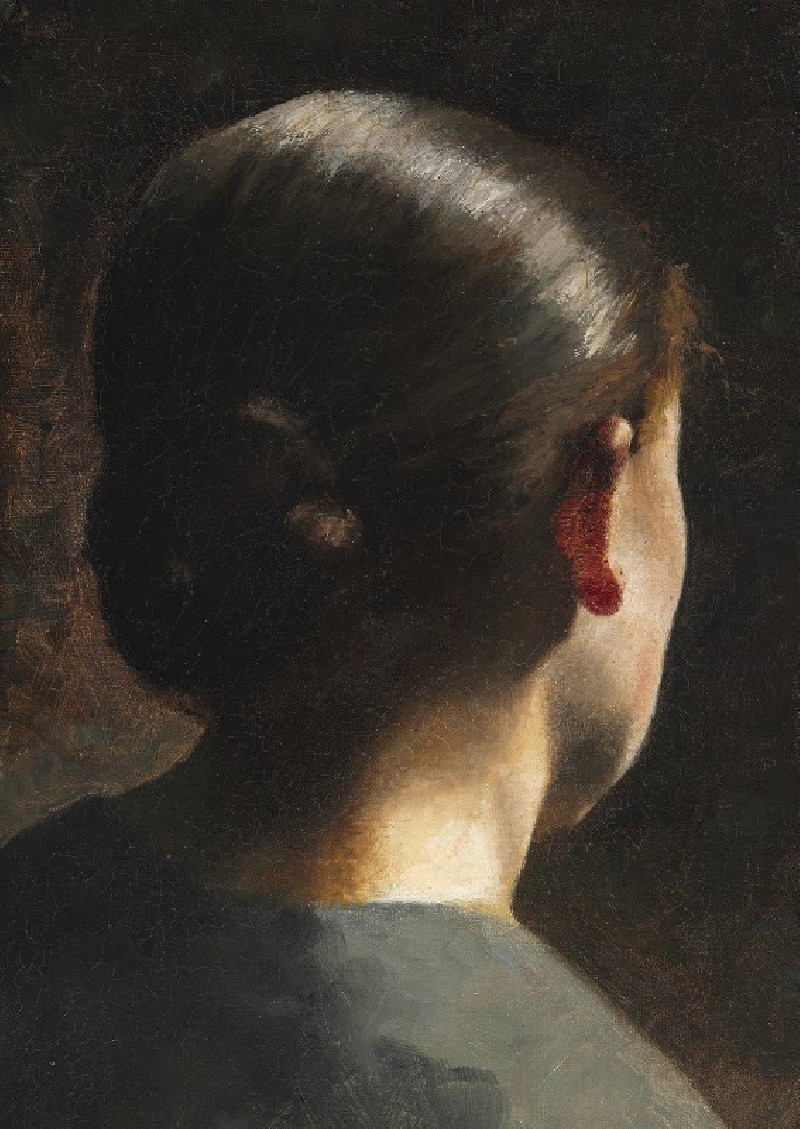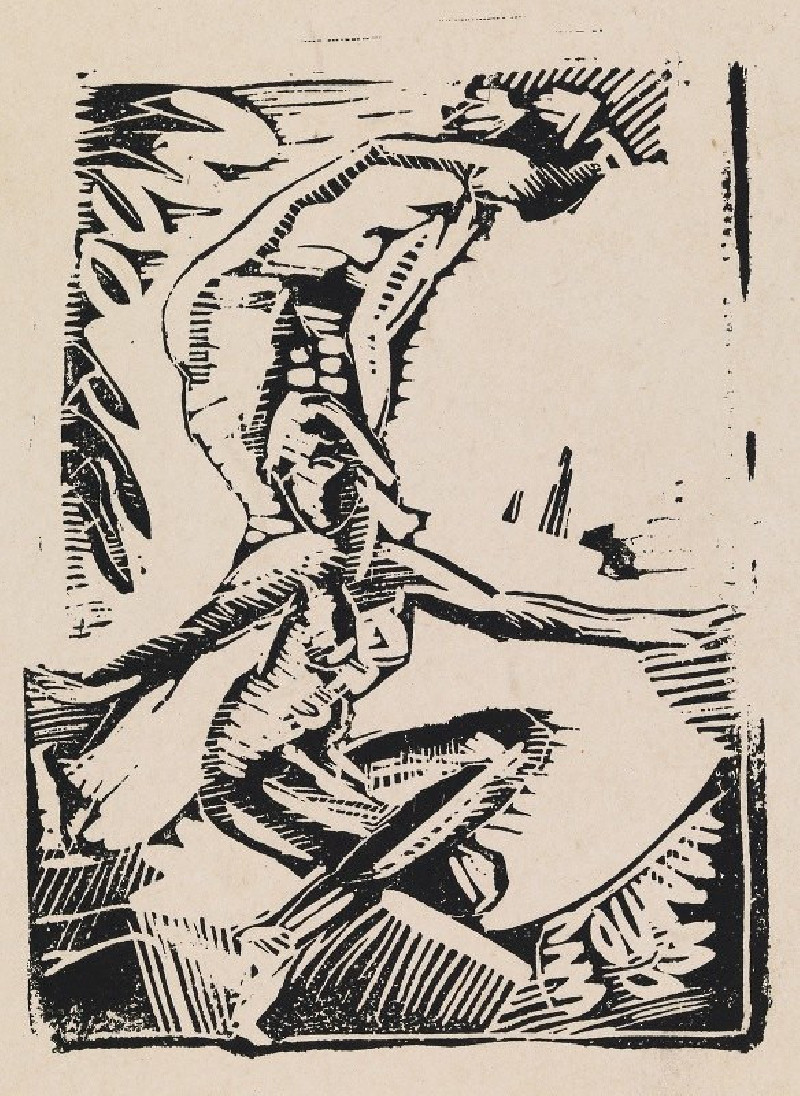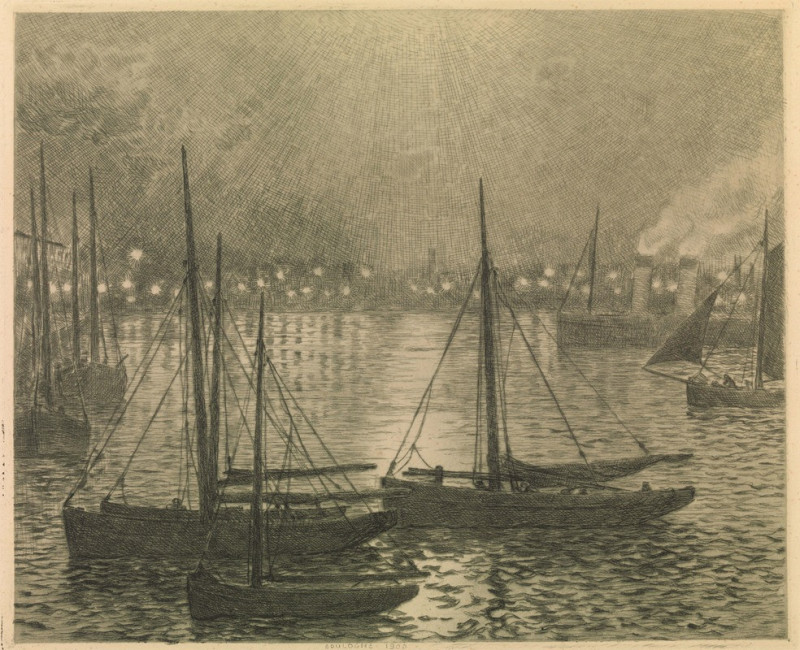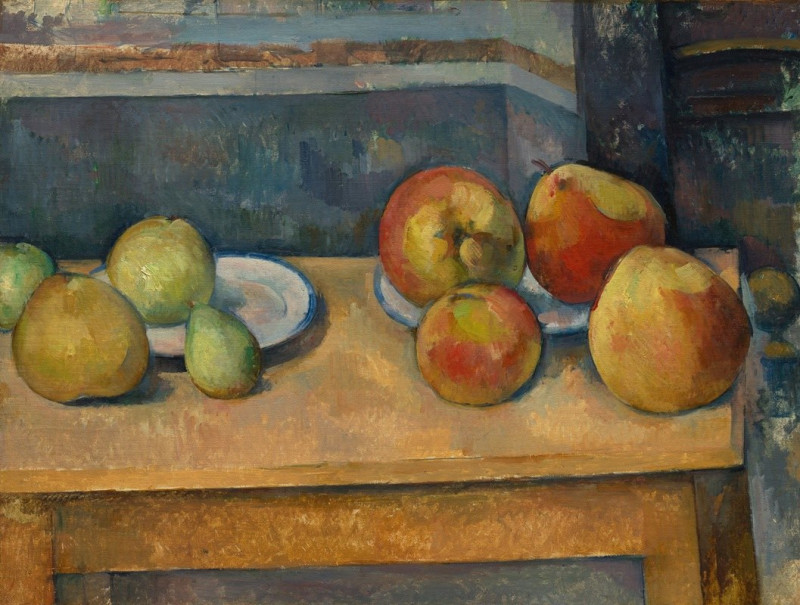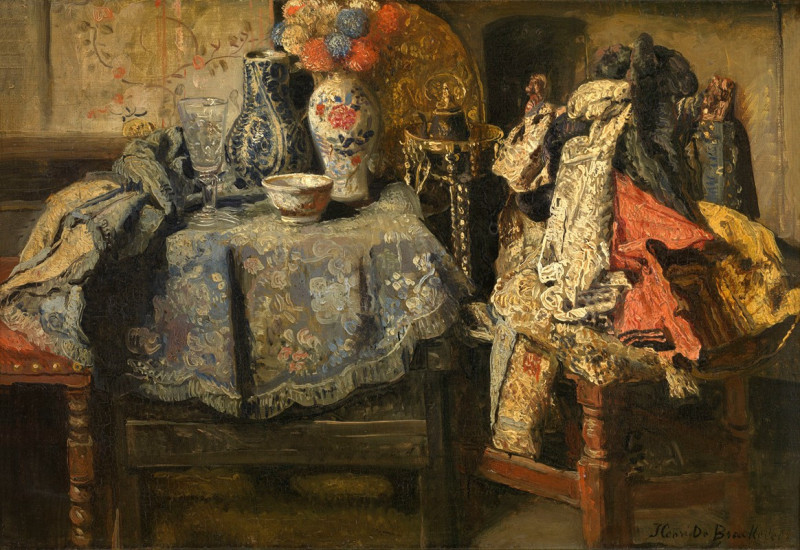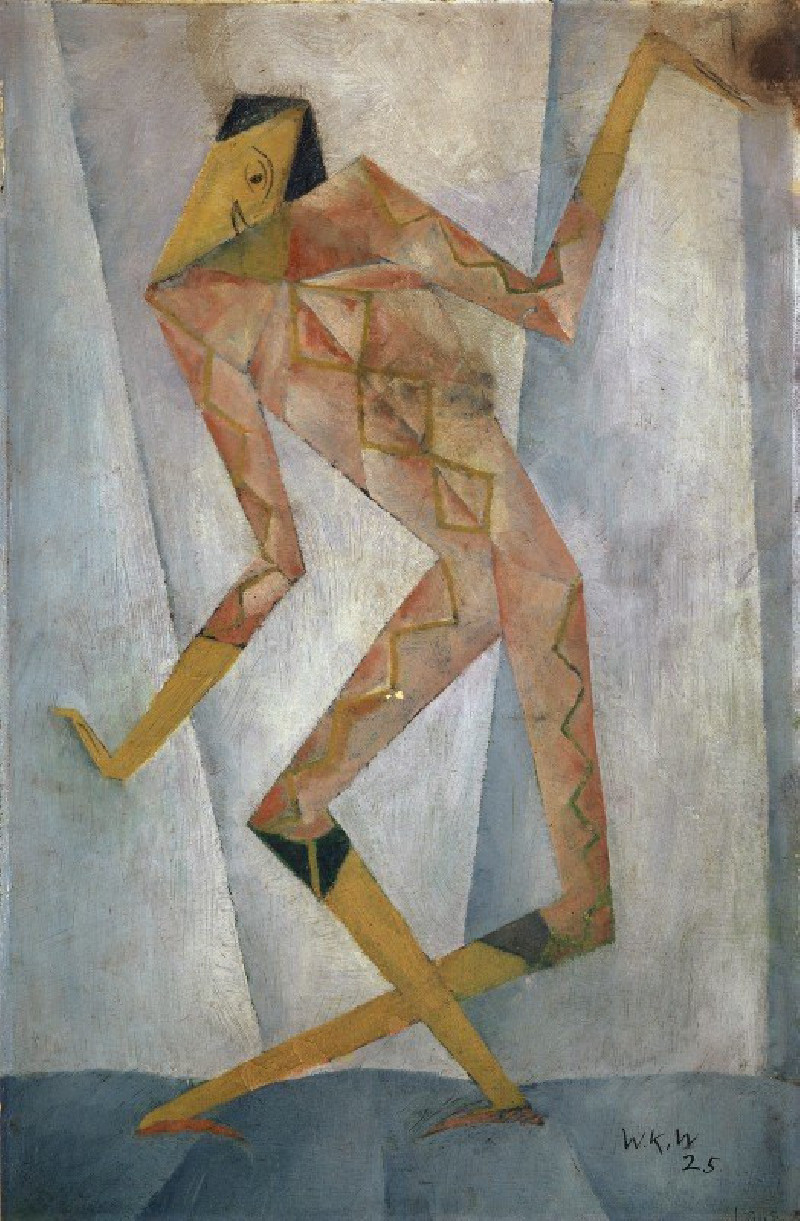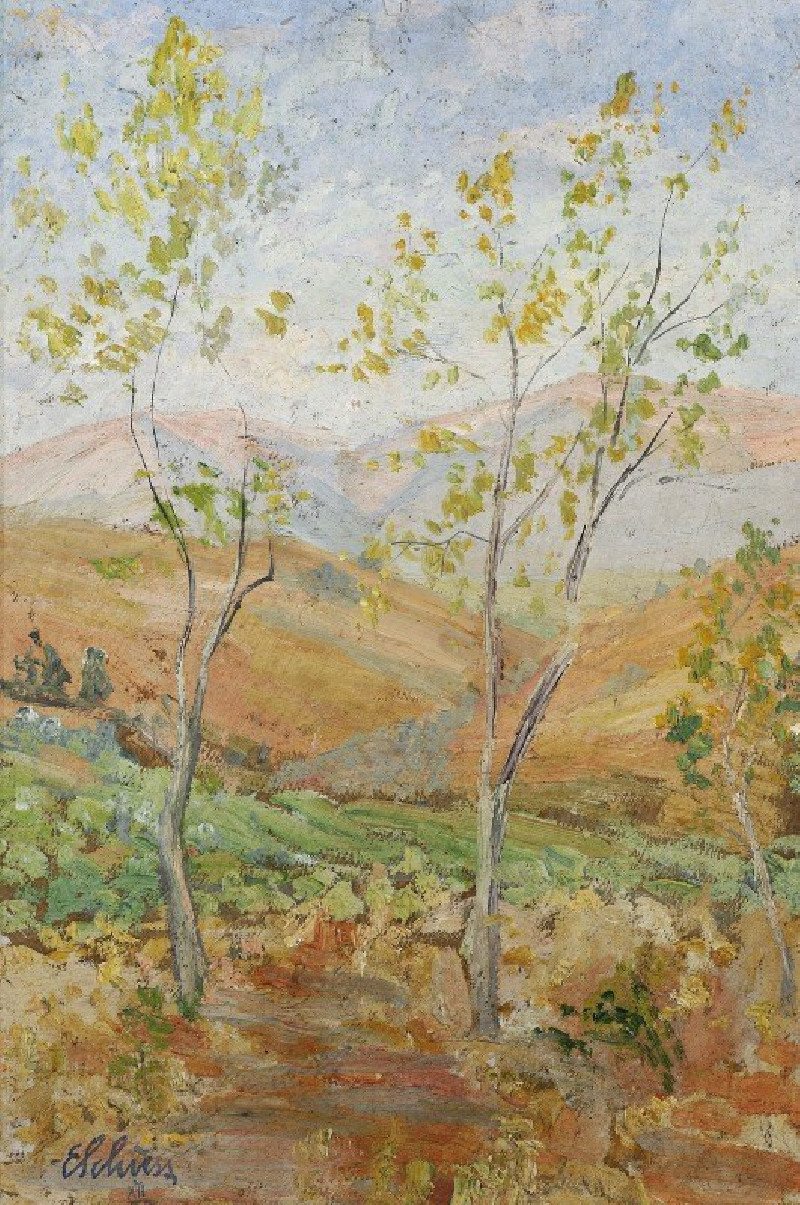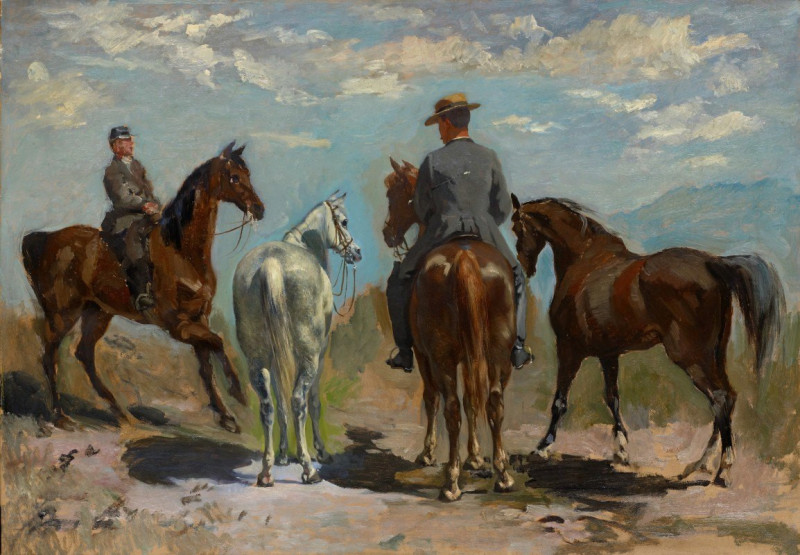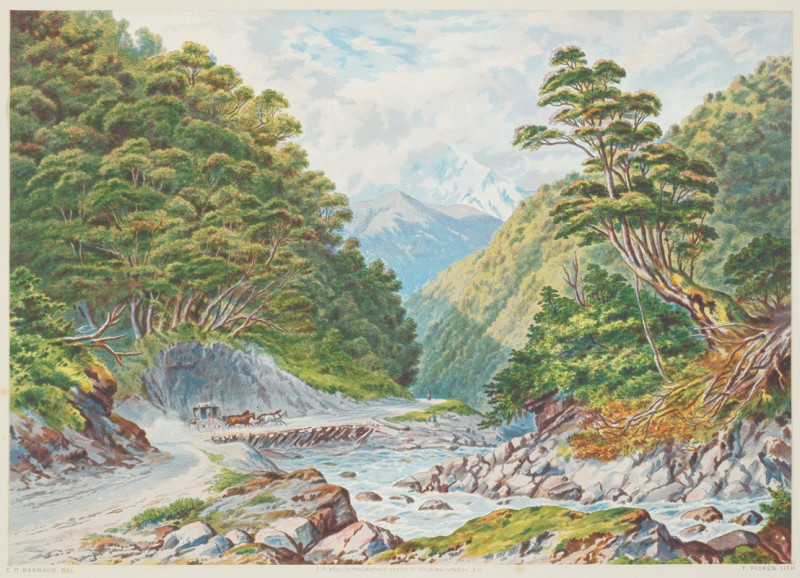weiblicher Akt VI (ca. 1926)
Technique: Giclée quality print
Recommended by our customers
More about this artwork
1926)Karl Wiener’s "Weiblicher Akt VI" is a striking example of his adept skill at figure painting, reflective of the artistic styles prominent in the early 20th century. The painting features a female nude seated on a wooden chair, her back facing the viewer, creating an intimate yet respectful portrayal of the human form. With subtle contours and warm, realistic skin tones, Wiener captures an essence of natural beauty and tranquility.The subject sits with a relaxed poise that is both elegant and candid, turning her face slightly toward the viewer as if caught in a moment of introspection. The simplicity of the composition—with its sparse background and minimalistic approach—focuses attention on the graceful lines of the figure and the play of light across her skin.Wiener's use of watercolors lends a softness to the image, allowing the colors to blend seamlessly on the canvas, enhancing the delicate details of light and shadow. This piece not only exemplifies Wiener’s mastery over technique but also his ability to convey deep emotion and serenity through the simplicity of form and hue.

